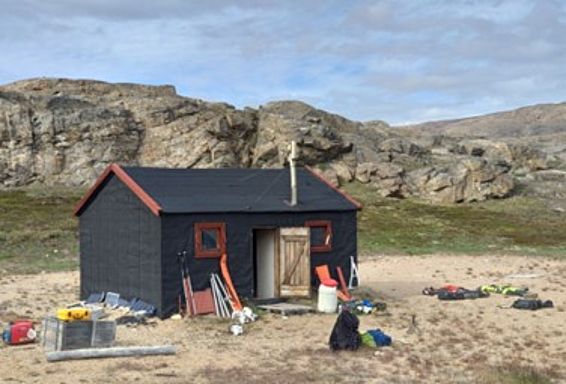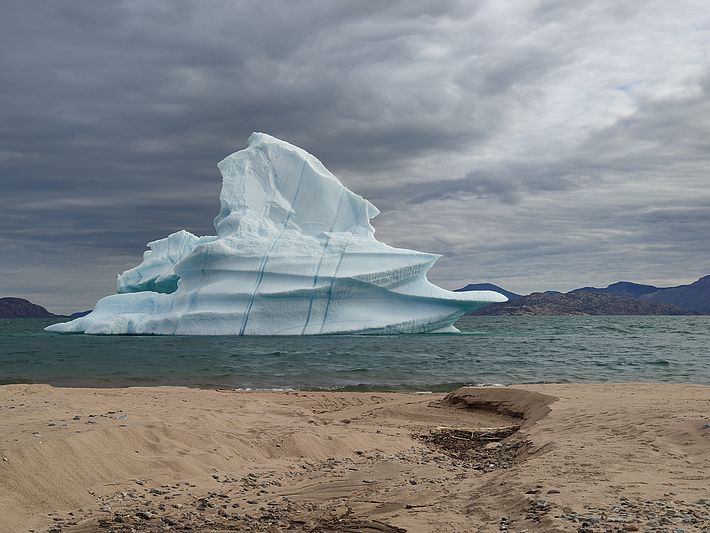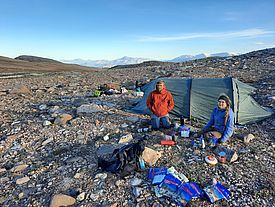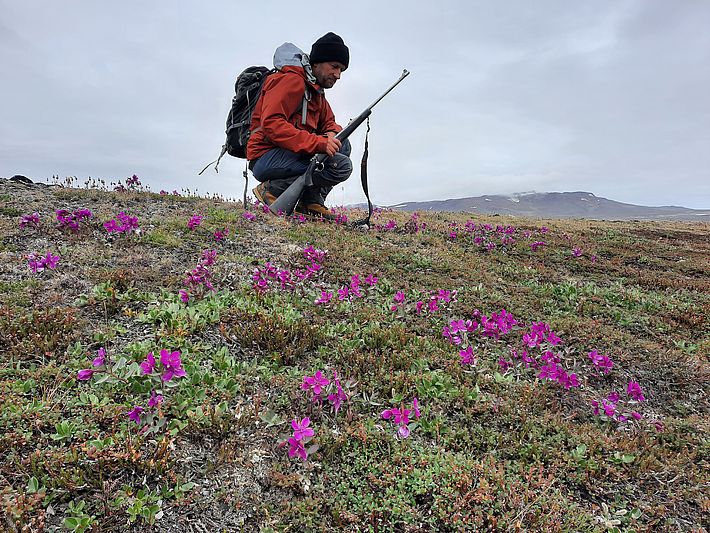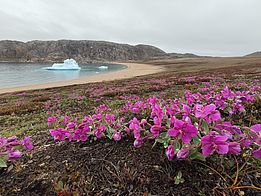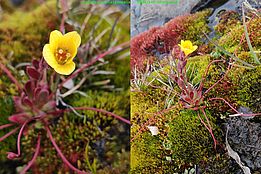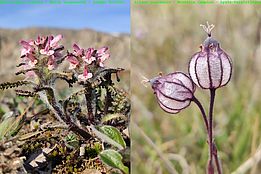SLF biologist Christian Rixen writes about his expedition to Greenland in the footsteps of historical botanists - and climate change.
Clavering Ø is where we'll be spending the next two weeks. It's a small historic hut which we've kindly been allowed to occupy (many thanks to Nanok, an association that renovates old huts). There's a little table and three plank beds – what more do we need? The hut was built in 1931, and around us we find the remains of several houses from the same period. It gradually dawns on us that we're in a place steeped in history (and not just of a botanic nature). In 1931, Lauge Koch, with assistance from Paul Gelting (!), constructed a large research station with several houses here. Unfortunately, in 1945, German soldiers destroyed the station – except for the small hut where we're now staying.
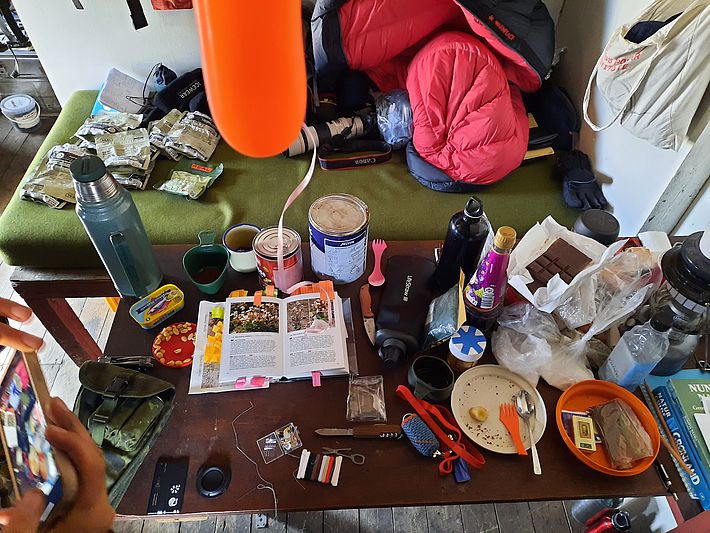
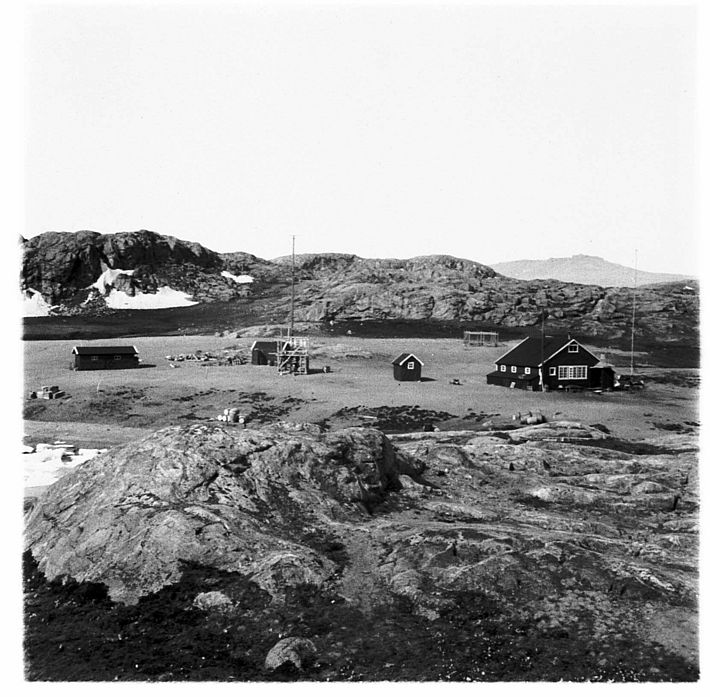
The hut is our base camp, but we'll soon be moving on as we want to explore higher ground. We aim to follow exactly the same route as Fritz Schwarzenbach, visiting the same survey sites, from sea level to around 1,300 m. This will involve a lot of work, including at high altitudes, and will take us too far away from our trusty hut (two weeks is a really tight time frame), so we'll need another camp at around 600 m, just as Schwarzenbach had. This means packing camping equipment, food for a few days, rifles, etc. and setting up camp on the mountain.
The weather's good and work progresses well. But how do we protect ourselves from polar bears that might decide to pay us a visit at night? First, we set up a polar bear alarm fence around the tent. It doesn't deter the bears, but it does emit a warning sound if a large animal (or a person) walks into the tripwire. The only trouble is that you then have to be out of your sleeping bag and tent in a couple of seconds in order to take action. That isn't safe enough for us, so we decide to keep watch overnight. We each take a turn in three-hour shifts, e.g. from midnight to 3 a.m., from 3 to 6 a.m. and from 6 to 9 a.m. That way, everyone gets around six hours' sleep. Not enough, but it'll have to do. The sun shines 24 hours a day anyway, and the view from the camp makes up for the lack of sleep. The middle shift isn't the most popular, but is sometimes rewarded with sightings of mountain hares, which are almost completely white even in summer. They don't seem bothered by our presence. Musk oxen also approach the camp, but disappear again pretty quickly. The polar bear count is zero (fortunately!).
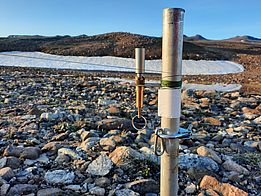
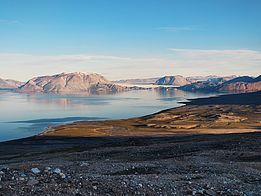
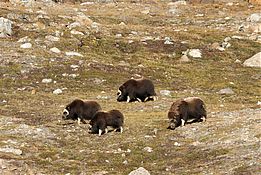
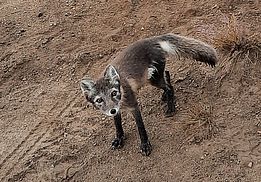
About the work ¶
Schwarzenbach recorded all the plant species he found at 19 locations. He also noted all the species he saw en route, and especially the highest elevation at which each species occurred as he made his way down. We replicated this approach as much as possible. Thanks to good photographic documentation of Schwarzenbach's trip, we were able to track down most of the locations. With the weather on our side, we reached the highest point, the summit of Østtinden (located at around 1,275 m), in the first few days. From there, we noted the highest occurrences of all plant species on the way down. We again recorded all the species at every 100 m of elevation, so that we now know their current altitudinal range and can compare it with what it used to be. This was enjoyable but also very time-consuming and arduous work. As it never got dark and we were keen to take advantage of the fine weather, we didn't get back to the tent or hut until after midnight on several occasions.
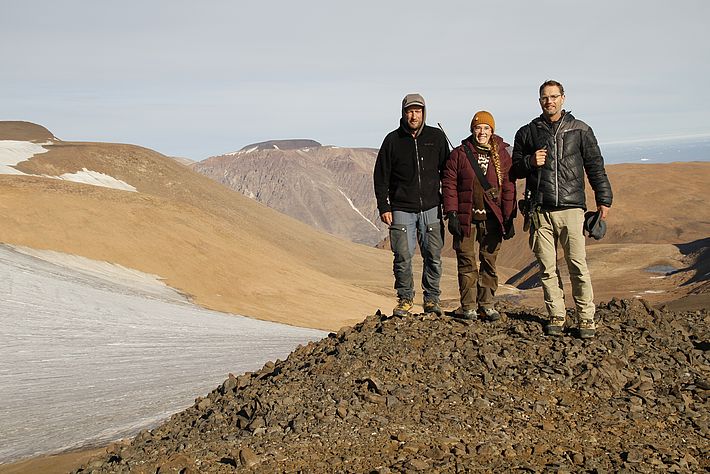

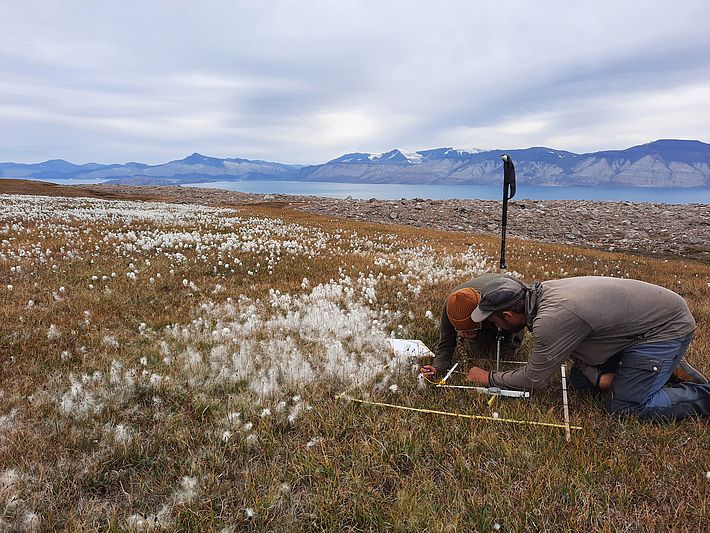
Back in Switzerland ¶
We're currently in the process of analysing our data. It's still too early to say whether there's been a further upward shift in the plant species' range over the past 20 years, but we already know something about the comparison between Gelting's and Schwarzenbach's studies. Schwarzenbach wrote in his preliminary evaluation that the maximum altitude limit had risen by five to six metres per decade, across all species. While Gelting found eight species at 1,225 m and above, Schwarzenbach recorded 28. We're curious to see whether we can confirm these trends or whether they have even accelerated. Similar to glaciers, plants are excellent indicators of changing environmental conditions such as temperatures and precipitation, and the further back the information goes, the better we understand how the environment in Greenland has changed over the longer term. What's more, far too little is known about the plant cover in such a remote region. We also came across some rarer plant species, and in order to conserve biodiversity it's important to know about these rare species and their occurrence (in fact, the Northeast Greenland National Park is the largest but also the least visited national park in the world!). With Greenland currently undergoing significant alteration due to climate change and the ice cover decreasing, knowing whether plants can colonise new habitats, and how quickly, is key. Last but not least, this has implications for soil formation and the sequestration of carbon by plant roots. In our study, we want to use historical information to help understand the changes taking place in what, from our point of view, is an extreme part of the world.
We'd like to thank the International Network for Terrestrial Research and Monitoring in the Arctic (INTERACT), Zackenberg Research Station, the Swiss Foundation for Alpine Research (SFAR) and the Schwarzenbach family for supporting our project!
Read part 1 of the blog here. In it, Christian Rixen writes about the background to the project and the journey to Clavering Ø.
